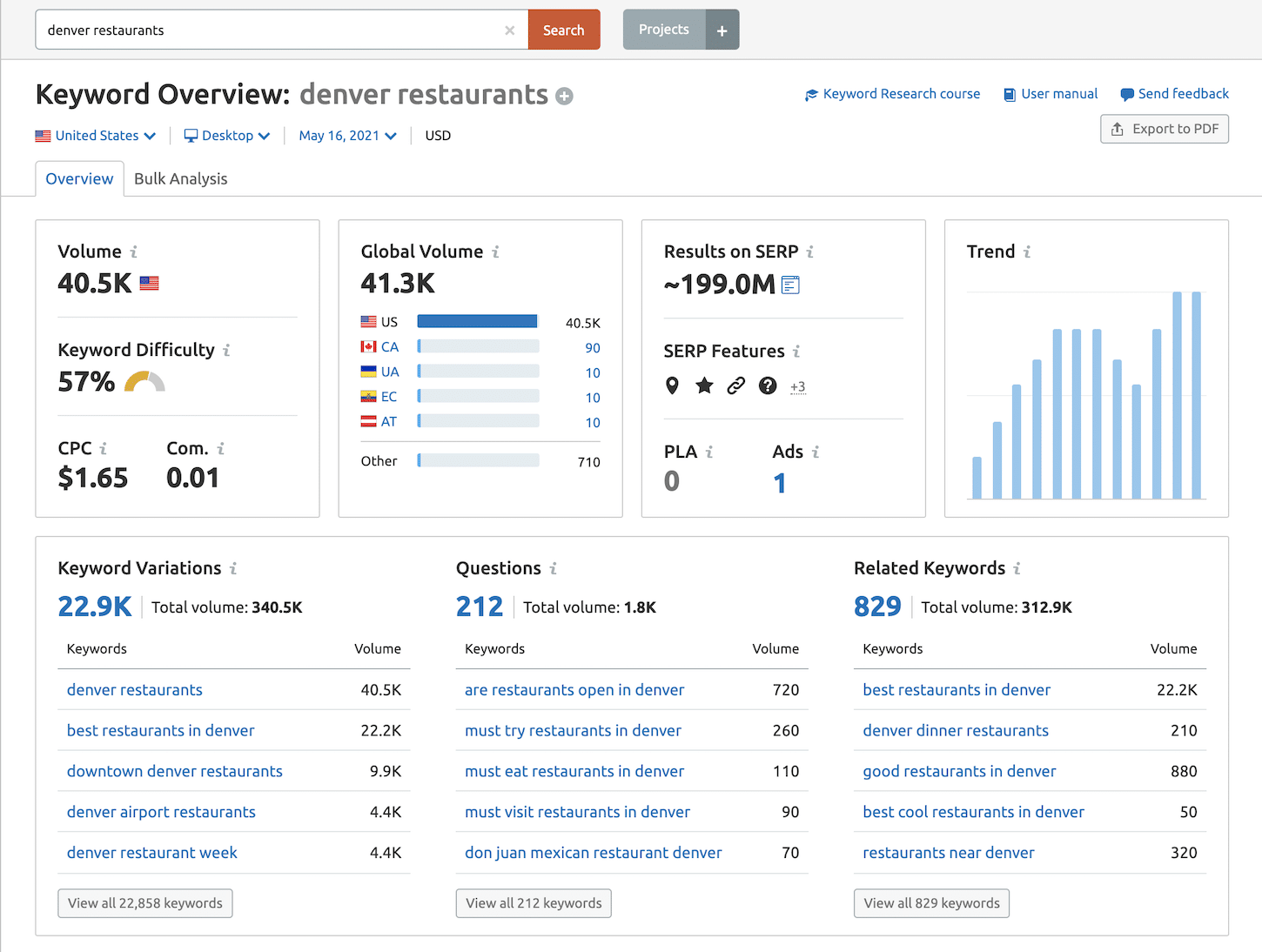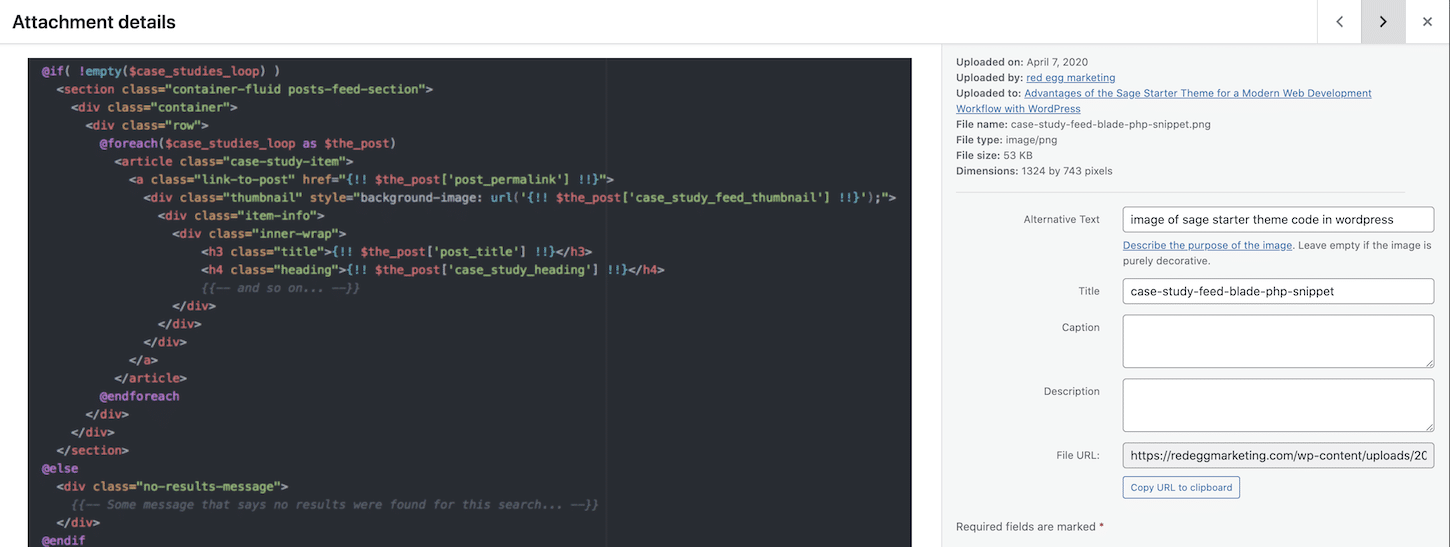
Do These 4 Things Before Publishing a Blog Post for SEO
On-site SEO is greatly impacted by content creation. Regularly adding new, relevant, and topical information to your website improves keyword density and helps Google understand what your website is all about. Google can then present your content to people searching for content related to your business.
Posting on your blog is one of the easiest ways to consistently add new content. Maintaining your blog content will get more traffic to your website and improve keyword rankings. There are many things you can do to optimize your SEO, but we’ll share just 4 tips you can use today to start ranking higher.
Keyword Research
Keyword research is a technique we use in the SEO world to discover topics that users are most interested in. You can filter keywords and find new inspiration using metrics like search volume and frequency. Based on this search engine data, you can plan your blog content to ensure you’re writing posts about topics that people are actually looking for.
A great tool that we use here at Red Egg to strategize marketing plans for our clients is Semrush. Depending on the size and timeframe of the digital marketing strategy, we will create in depth projects to monitor and track changes in the SEO world according to the clients’ industry and site history. If you’re just interested in seeing a quick breakdown of your keyword plan, Semrush’s Keyword Overview feature is the easiest way to get a quick analysis. You’ll find a comprehensive summary of all major keyword metrics — volume, CPC, competition in paid search, top-ranking pages, ad copy, and more.
From there, you can get into more comprehensive data in the Ad History Report and Keyword Magic Tool.

As a rule of thumb, you should revisit your keyword planning tools each month. We do this for a number of reasons. First of all, keywords change. Trends often alter the queries people search for online and their phrasing could change the way you optimize content on your site. Search engines evolve too! Algorithms become more advanced to better understand content and also match users’ activity so you want to be sure you’re keeping up with the most recent information.
Use Images and Videos
Search engines often rank engaging content higher in search results. Images and videos are far more engaging than plain text. The more you break up long form content with engaging and relevant visuals aids, the more captivated you’ll keep your audience. Google takes this simple theme into account when judging the relevance of your content.
This isn’t to say that a 300-word blog post should feature seven different images. However, if there are relevant images that will enhance your posts, don’t be afraid to use them.
As you’re adding visuals, make sure that you optimize them for SEO by adding alt descriptions related to the image and your topic. Alternative text, also called alt description, is the written copy that appears in place of an image on a webpage if the image fails to load on a user’s screen. This feature helps screen-reading tools describe images to visually impaired readers and allows search engines to better crawl and rank your website. Google appreciates creators who go the extra mile to make their content accessible to all users.

Depending on your site, you can add alt text within the settings of the photo. Make sure this description is relevant to your blog topic and can be described using your target keywords or their synonyms.
Word Count and Keyword Frequency
When creating blog content for SEO, you should always make sure your articles have at least 300 words. However, develop content for each web page on a case-by-case basis. Some of your posts may only require 300 words to get the point across adequately. More long form topics may host 1,300 – 2,000 words of copy.
The key here is to focus on quality content.
The amount of times you should use your keywords within your articles is dependent on the number of words on the page. Keyword density can also be calculated by dividing the number of times a given keyword is mentioned by the total number of words on the page – the resulting figure is the keyword density of that page. WordPress plugins like Yoast SEO help keep track of things like this. Yoast will read content on a page and calculate how to best optimize the page for search. Then, the program will give recommendations based on importance. Here is a recommendation alert for keyphrase density.

Add Internal and External Links
Linking is a great way to develop a contextual relationship between your new and old posts while adding information from other sources on the web. Google doesn’t explicitly say that linking to outside sources impacts your SEO, but citing sources improves the trustworthiness of your content. This is one of Google’s four primary indicators of helpful content, and helpful content fuels search rankings. They want sites on the internet to responsibly share and promote other sources of knowledge and insight so users can better understand how your content is relevant to the questions that they have.
Internal linking will improve your on-page SEO as well. By providing in-text links to other pieces of content on your own site, you will ensure your older articles continue to get new links.
Pro Tip
Small Business SEO
If you’re a small business just starting out with search engine optimization, these tips may feel a bit confusing or overwhelming. Creating SEO-optimized blog content doesn’t mean you have to know the ins and outs of Google’s algorithm or be an expert at strategy and marketing. There are many tools at your disposal to help make this job easier, and if all else fails, you can bring in the pros to help you capture new traffic and leads. Red Egg’s talented creatives will integrate seamlessly into your organization, adding the full suite of marketing services, including SEO, you need with the flexibility you want.